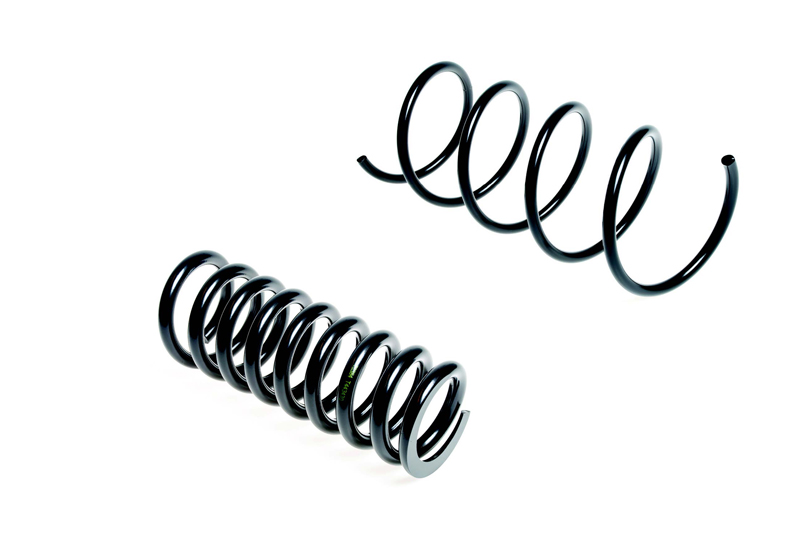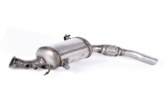
Lesjöfors discusses the pressures put upon many component manufacturers to make their products more lightweight, and how the company has gone about achieving this for its own range of vehicle springs.
For many years, car manufacturers have put pressure on spring producers to design lighter and cheaper suspension springs. Any reduction in the weight of a vehicle increases fuel efficiency, reduces emissions, and can improve performance, but spring designers need to make sure such benefits are not mitigated by an increased risk of premature breakage.
There are two main ways to reduce the weight of a traditional steel coil spring. The first is to remove as much steel as possible from the spring; the second is to make the spring out of lighter material, such as titanium. Up until now, mainly due to financial and technical considerations, spring producers have chosen the first option.
Removing steel from a spring can simply mean making it from thinner wire – manufacturers have striven to create springs from wire with a higher tensile strength, allowing them to handle increased levels of stress with a reduced material diameter. Once the wire thickness has been reduced, it is necessary to also reduce the number of coils in order to maintain spring rate. This increases the average pitch (gap between each coil) which, while saving weight, adds to material stress.
These developments mean that any weakening of the spring due to corrosion will dramatically increase the risk of breakage. Manufacturers like Lesjöfors combat this risk by introducing an additional layer of corrosion protection to their springs. All Lesjöfors coil springs undergo a multi-stage process to coat each spring with a corrosion-resistant chemical compound called zinc phosphate.
Zinc phosphate provides protection from corrosion when scratches and other defects occur in the paint layer. Zinc phosphate offers galvanic or ‘sacrificial’ protection to the spring via preferential oxidization, meaning that the zinc corrodes before the steel, and generally at a slower rate, prolonging the life of the spring.

Traditional coil spring designs feature closely-would end coils, often ground flat, called ‘inactive’ or ‘dead’ coils. These end coils don’t support any of the vehicle load, but are used to square the end of a spring to assist with fitment into the spring pan.
Modern spring designs rarely have ground ends, which saves on cost, and contain as few dead coils as possible; with spring designers opening the end coils to compensate. This is a further way for designers to take weight out of a spring. One danger of coil springs designed with open ends however, is that the broken spring is unlikely to be retained by the spring pan and can immediately come loose, with obvious safety risks, not least of which is potential damage to the vehicle’s tyres.
This evolution has led some manufacturers to introduce the concept of ‘springcatchers,’ also known as suspension cups, in an attempt to harvest such broken components. These are not a guaranteed solution and may, somewhat counterproductively, add weight to the vehicle.
The next step
Fibreglass-resin composite springs offer a weight saving compared to traditional steel springs, and composite leaf springs are already on the market, with some vehicle manufacturers introducing them on certain models. Composite springs are immune to corrosion and much more durable than steel springs. They are, however, considerably more expensive.
While there are significant weight savings to be made by replacing a heavy steel leaf spring with a composite, the potential savings on coil springs are more negligible, and do not currently justify the difference in price for most vehicle manufacturers. The same is currently true for titanium springs, which offer similar weight-saving advantages.
In the meantime, some new passenger cars are being launched with a single transverse composite leaf spring on the rear axle, rather than coil springs, offering both weight and space savings.







